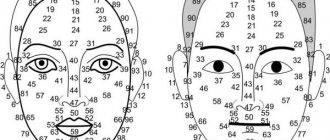Character is a structure of persistent, relatively constant mental properties that determine the characteristics of a person’s behavior. As a rule, it is understood as a set of qualities and properties of a person that leave a certain imprint on his actions.
Character is manifested in a person’s relationship to the world around him:
- To oneself: modesty, self-criticism, self-esteem, vanity, impudence, arrogance, resentment, self-centeredness, shyness.
- Towards other people: isolation or sociability, self-confidence or self-criticism, humiliation or pride.
- To the point: laziness or hard work, conscientiousness or dishonesty, responsibility or irresponsibility.
- To property: greed or generosity, wastefulness or frugality, sloppiness or neatness.
The central personality traits are the attitude towards others, work and oneself. These are recognizable, stable characteristics that allow a fairly complete and accurate description of a personality. The famous psychologist Gordon Allport came to the conclusion that every person has between five and ten central personality traits. Additional (secondary) character traits are less stable and recognizable and are often situationally determined.
For example, for one person a certain trait (say, selfishness) may be central, while for another it may be secondary, because it is clearly manifested only in a certain situation and does not dominate as much as in the first.
Definition and general characteristics of the concept
Character is a set of stable traits that determine a person’s behavior, his lifestyle, habits, and reactions to various situations. Character is not an innate component of the psyche, but is formed throughout life. The basis for the formation of character is biological characteristics: gender, type of temperament, set of genes. Refracted through the prism of education and individual development, they form a unique psychological picture.
The word “character” translated from Greek means “imprint, seal.” This is what distinguishes a person from other people, makes him unique and inimitable. It is impossible to meet two people with absolutely identical characters.
Character plays a decisive role in our lives. Everything we do, what we think, what emotions we experience is determined by our character. This is a kind of set of patterns fixed in the psyche that are designed to simplify our existence. Imagine: faced with the same situation every time, we would have to re-evaluate it, build a behavior strategy, and analyze the consequences. Character allows you to optimize this process.
Knowing a person's character well, you can almost accurately predict his behavior.
Natural and social preconditions of character
The origin of character traits, their nature, the possibility or impossibility of changing them are the subject of long-standing discussions among psychologists and often the reason for categorical judgments characteristic of ordinary consciousness.
A person reaches social maturity, possessing a system of established character traits. This process is invisible, and it seems to a person that he has always been the way he is now. Thus, it is believed that the qualities of human character are inherent in nature, innate. This statement is very common: “by nature he is a coward and a scoundrel,” or “the tendency to lie is his innate quality,” or even “the heredity that he had went to his uncle.”
In fact, two brothers in the same family are raised under the same circumstances. The difference between them is only two or three years, and in the same school, and their parents, in general, treat them the same, but the boys are different in everything, each other’s characters are not at all similar. Therefore, it is reasonable to conclude that human nature is from birth.
How can we explain that life “shapes” a person’s personality according to different patterns, even under similar conditions? First of all, we must recognize that the “source material” does vary from person to person.
A person is born with different characteristics of the function of the brain and endocrine system. These features are not psychological, but physiological, but they are the first reasons why the same effect on children can have different psychological effects. They determine the conditions under which the human psyche will develop.
It should be remembered that “similar living conditions” (even within a family) is a very, very relative term. The fact that the older brother is accustomed to consider himself older and in some sense superior to the younger brother, who looks down on him and seeks his protection or rebels against the tyranny of the first-born, in no way creates such circumstances that promote or hinder the formation of such traits character, such as arrogance or caring, responsibility or indifference, selflessness or envy.
At the same time, there are many other conditions that are not identical. Changes in the financial situation of the family during the two to three years between the birth of the first and second child, changes in relationships within the family (often the youngest turns out to be more spoiled), and good friends meet on the path of one brother and do not meet with the other, and different teachers in their pedagogical talent - all this contributes to the emergence of various traits or personal qualities.
Character is largely the result of self-education. Character accumulates a person's habits. Character is manifested in the activities of people, but it is formed in the same way. If a young person wants to acquire self-criticism as a character trait, he must act self-critically.
Life, living conditions in the family, not to mention work and study - a school of human character. Teachers and parents are constantly faced with a responsible task: to notice the slightest changes in the character of children and take them into account when implementing their line of education. There is probably no greater danger to educational work than a template used as a pedagogical technique. This is especially unacceptable when it is necessary to apply an individual approach to the child.
Refusal of templates in the upbringing of a child’s personality presupposes a creative approach to issues of character formation. You can make mistakes along the way, but a serious, thoughtful, unconventional decision will be more fruitful than pedagogical clichés, if judged not by the results of individual actions (“this is what you achieved in the child”), but by the end result of the entire process of character formation.
Character traits
Those traits that most often appear in similar life situations are character traits.
For example, a person usually behaves friendly and affable with others, but one day he breaks down and becomes rude. In this case, rudeness is not a character trait. This is a consequence of a situational factor. Most likely, the person was tired or upset. But friendliness can be fully attributed to the stable traits of his character.
All traits are usually divided into three groups depending on their focus. Each group also has positive and negative traits.
- Attitude towards yourself
This group of traits reflects a person’s attitude towards his own self. These include self-respect, pride, modesty, self-criticism, vanity, arrogance, pride, etc. The combination of these characteristics determines how a person positions himself in life, what place he places himself in relation to other people, how he evaluates his successes and failures, and what his goals are. chooses.
- Attitude towards other people
These are character traits associated with social interaction. Positive ones include responsiveness, friendliness, sociability, altruism, sensitivity, respect; negative ones include snobbery, contempt, isolation, callousness, and cynicism. The effectiveness of communication directly depends on these traits.
- Attitude to activity
These include hard work, responsibility, activity, diligence, creativity, accuracy, and perfectionism. And also laziness, passivity, irresponsibility. These traits are manifested in professional activity, in a person’s attitude to affairs and responsibilities.
The combination of traits from these three groups forms the character structure and a unique psychological portrait of a person.
Social character of personality
The social character of a person is understood as those qualities that should be characteristic of absolutely all people of a particular society. When going out into society, a person must show not only individual traits, but also those qualities that are considered acceptable, approved, and normal. This set is formed by society, the media, culture, education, educational institutions, religion, etc. It should be noted that parents also raise their children depending on the framework and norms that are accepted in society.
According to E. Fromm, the social character of a person is a person’s way of adapting to the society in which he is located. This is an unpunished and free way of existing in a particular society. He believed that no society allows a person to fully realize himself, since he always dictates its own rules and norms, which should be above individual characteristics and desires. This is why a person is always in conflict with society, when he must obey in order to be accepted, or tries to protest, which can be punishable.
Society will never allow a person to express himself in full force, which prevents him from realizing his inclinations and harms the individual himself. A distortion of character must occur when everyone fits themselves into certain frameworks and norms accepted in society. Only through the development of social character in a person does society make him safe for itself. What is important here is not the personality, but its safe manifestations that will be acceptable in society. Otherwise, there will be punishment for any individual self-expression that does not fit into the framework.
Character Formation
Scientists have for many years considered character to be an innate component of the psyche. This hypothesis was subsequently revised. Today there is no longer any doubt that character is formed throughout life. This idea was first expressed by the English philosopher John Locke.
Character begins to be formed immediately after birth. At this stage, a basic attitude towards trust or distrust in the world is formed. It is very important to surround the baby with love and care, to satisfy all his vital needs in a timely manner, and to take an active part in development.
The child grows up and begins to actively explore the world. Parents play the role of mediators and guides in this process. Their authority for the child is enormous. They have the strongest influence on the formation of his character. A child acquires some traits as a result of imitation, and some are formed as a result of targeted training.
After three years, the child’s social circle expands, peers and new adults appear in it. Character traits associated with social interaction begin to form: sociability, kindness, generosity, responsiveness.
When a child goes to school, adults’ assessments of his actions begin to play an important role in his life. An idea of what is good and what is bad is formed. Active socialization occurs, and the role of parents in the further formation of character begins to decline. The child manifests himself in vigorous activity, and the traits associated with it begin to develop: hard work, responsibility, initiative, punctuality.
Adolescents are actively developing moral, ethical and volitional qualities. By adulthood, the character is, as a rule, already fully formed. In the future, only adjustments to its individual features occur.
Thus, we can identify the main factors influencing the formation of character:
- parental education;
- cultural values proclaimed in society;
- personal example of people significant to a person;
- public opinion;
- self-development.
PERSONALITY AND CHARACTER OF PERSON
Having discussed the issue of character formation, it is natural to now turn to finding out how character and personality are related, especially since we have already discussed a similar question in connection with the consideration of temperament.
In the general structure of personality, character occupies a central place, uniting all other properties and behavioral characteristics. A person’s character undoubtedly influences his cognitive processes - perception, attention, imagination, thinking and memory. This influence is exercised through volitional and instrumental character traits. A person's emotional life is directly influenced by character. The same can be said about motivation and will itself. First of all, character determines the individuality and originality of a person.
Character differs from other personality traits primarily in its stability and, as we have seen, in its earlier formation. If, for example, the needs, interests, inclinations, social attitudes, and worldview of a person as a whole can change almost throughout a person’s life, then his character, once formed, remains more or less stable. The only exceptions, perhaps, are cases of severe diseases that affect the human brain, as well as deep organic changes in the central nervous system that occur with age, after which, for purely organic reasons, a person’s character may change. Finally, some of its changes may occur during life crises, which also cannot be considered as completely normal phenomena.
3 pages, 1033 words
QUESTION ╣ 14 Concept of character. Character types. Its features, properties
... character traits”, “character features”, there is also the concept of “character accentuation”. Accentuation of character is the strengthening of individual character traits, in which deviations in human psychology and behavior that do not go beyond the norm are observed... The character of many adolescents becomes accentuated - an extreme version of the norm. There are 10 main types of accentuation. 1. Hyperthymia. People, …
One of the human character traits that exhibits particular age and temporal stability is sociability
or a trait related in meaning to it -
isolation,
as well as more general character traits, of which the two mentioned are included as components -
extraversion
and
introversion.
C. Jung contributed a lot of useful information to understanding the genesis and functioning of these character traits.
“Considering the course of human life,” he wrote, “we see that the destinies of one are determined primarily by the objects of his interests, while the
destinies of another are determined primarily by his own inner life.”
The first type of people can be called extroverted,
the second -
introverted.
Extraversion and introversion as personality traits express, respectively, a person’s openness or closedness in relation to the world and to other people. In the case of an extrovert, we are dealing with a sociable person who always and everywhere shows a special interest in what is happening around him. In the case of an introvert, on the contrary, we notice that all the person’s attention is directed to himself and he becomes the center of his own interests. An introverted person puts himself and his individual inner world above what is happening around him. An extrovert, on the contrary, places the external world above his internal subjective experiences. This is the most general characteristic of these two, the most common personality types, based on different character traits. Let's take a closer look at their other psychological characteristics.
Extraversion is associated with certain character accentuations, in particular exaltation, demonstrativeness, excitability, hyperthymia, and sensitivity. All these character traits, taken together, usually form a single complex and occur together in a person. A person with such a complex of character traits is distinguished by increased activity and attention to what is happening around him. He responds vividly to relevant events and seems to live by them. Introversion correlates with a different set of personality traits, primarily with anxiety, pedantry, schizoidness, hysteria, and psychasthenia. People who have this complex of characterological characteristics are distinguished by their detachment from what is happening around them, aloofness, and independence.
Almost the same stability as extraversion and introversion is revealed by a complex of characterological personality traits that manifest themselves in the defense mechanisms we have already considered.
A person’s character is related to his interests, needs, and most of all is manifested in what is significant to a person. Therefore, you can correctly judge a person’s character by carefully observing how he behaves in significant life situations that allow him to satisfy his strongest and most pressing needs.
30 pages, 14564 words
Parents of teenagers' ideas about their child's character
... the sample size was 124 people, 62 teenagers (aged 12 to 15 years) and their parents. 1. The problem of parents’ ideas about the character of their child in the modern… child. Objectives: 1. To carry out a theoretical analysis of the literature on the problem of ideas of parents of teenagers about the character of their child, to reveal the basic concepts. 2. Select diagnostic tools for studying...
How is character different from temperament?
These two concepts are often confused or identified with each other. Let's be clear. Character and temperament are not the same thing, although they are closely related.
The first and most significant difference is that temperament is an innate indicator, and character is acquired.
The type of temperament is determined by the characteristics of the nervous system of each individual. Based on the combination of such general characteristics as strength, balance, and mobility of the nervous system, 4 types of temperament are distinguished:
- Sanguines. Strong, balanced, mobile nervous system. They are characterized by sociability, optimism, energy, and activity.
- Cholerics. Strong, unbalanced, mobile nervous system. They are characterized by high emotionality, quick temper, determination, and sociability.
- Phlegmatic people. Strong, balanced, inert nervous system. Phlegmatic people are slow, calm, efficient, and withdrawn.
- Melancholic people. Weak, unbalanced, inert nervous system. Melancholic people are vulnerable, sensitive, anxious and withdrawn.
Temperament is the basis on which character is formed. However, one should not assume that temperament completely determines him. The human psyche is very plastic - it can adapt to any conditions. People with different temperaments may have similar character traits, they will just manifest themselves differently.
For example, let’s take the quality of determination. Choleric people go straight to their goal. Any obstacles ignite sporting anger and passion in them. Sanguine people act methodically and confidently, do not give in to emotions and weigh every step. Phlegmatic people move towards the goal according to the principle “the slower you go, the further you will go.” Melancholic people have to constantly push themselves emotionally in order to maintain a high level of motivation.
There are traits that are more likely to develop in certain temperament types than others. But this does not mean that a person cannot go against the flow and shape them consciously through volitional efforts. Character can mask some of the innate manifestations, enhance others and inhibit others due to the formation and strengthening of new reflex connections.
Therefore, you need to constantly work on your character: get rid of bad traits and cultivate good ones. This is an interesting and creative process. Treat it like a game.
Nature and manifestation of character
Character and temperament
From nature, a person receives only opportunities for development in a certain direction. They lie in the anatomical and physiological characteristics of the brain and endocrine system of the born child. On this basis, develop a person’s individual characteristics, especially his temperament. Temperament is a stable individual personality trait that is expressed in the dynamics of mental processes of action.
Temperament traits include the strength or weakness of experienced feelings and desires, their depth or surface, the strength or variability of moods, the accelerated or slow pace of actions and the course of mental processes, the ease or difficulty of moving from stimuli to actions, the greater activity or passivity that a person exhibits when colliding with obstacles.
The doctrine of temperament originated in antiquity, in ancient times. Even then he distinguished four types of temperament. These types:
- choleric,
- melancholic,
- phlegmatic person,
- sanguine
Character, like temperament, shows dependence on the physiological characteristics of a person. Temperamental traits leave their mark on natural phenomena and determine the dynamic features of their formation and course. Temperamental traits can counteract or promote the development of certain aspects of character.
- It is more difficult for phlegmatic people than for choleric or sanguine people to form their own initiative and determination.
- For melancholic people, a serious problem is overcoming shyness and anxiety.
- Character formation, carried out in a group of a high level of development, creates favorable conditions for the development of choleric individuals with greater restraint and self-criticism,
- sanguine - caring, phlegmatic activity.
What is character accentuation
Accentuation is an extreme degree of expression of some specific character traits. A person with accentuation of character is mentally healthy, but on the very border of the norm.
Under unfavorable conditions, accentuation can develop into a mental disorder, leading to alcoholism, drug addiction, deviant behavior and suicide.
Accentuations are most common among teenagers. According to statistics, 95% of boys and girls aged 14–17 years have sharpened, hypertrophied character traits. With age, this figure decreases to 60%.
Accentuations cause personality disharmony, complicate socialization and general adaptation, and reduce productivity in all areas of life. The formation of accentuation is influenced by both hereditary factors and upbringing.
Human character and appearance. From the history of psychological teachings
In the history of psychology, there were many theories that connected character with the shape of the skull, facial structure, constitution (physique, body structure, etc.), trying to outline a way to decipher character, that is, to diagnose some external characteristics of a person. Various systems for determining character arose from practical needs and reflected the needs of society back in ancient times.
For example, a slave owner who bought a slave at the market could accurately judge his physical strength by feeling his muscles, his age, looking at his teeth, his agility, making him run or jump. But what could he say about the character of his future slave? Will he be obedient or stubborn, simple-minded or smart, hardworking or lazy? Will he remain loyal to his master, or will he rebel and run away in a few weeks? All this was an important problem for the buyer in a slave society.
Currently, neither in anthropology, nor in anatomy, nor in psychology is there reliable data that a person’s character depends on the structure of the body, the shape of the skull, the configuration of the face, the color of hair and skin, the length of the limbs, and so on.
Does it really follow from this that such an alluring opportunity to determine a person’s character based on studying his appearance is completely unnecessary? One can definitely only conclude that the character should not be related to the constitution of the body. But perhaps character can be judged by some external signs?
Charles Darwin in his book “On the Expression of the Emotions in Men and Animals” wrote that it is important for a physiognomist to know “that each person basically shortens only certain muscles of the face, following his personal inclinations, these muscles can become more developed, and therefore , facial lines and wrinkles that form when they are usually shortened may become deeper and more noticeable.”
These ideas of Darwin became the basis for the research of many psychologists, who began to build their physiognomic doctrines on the description and interpretation of facial expressions and the state of their soft parts. Specific physiognomic inventories were created with a psychological interpretation of facial expressions.
Careful examination of physical appearance, including familiar facial expressions, played an important role in determining character. However, a person’s appearance alone cannot provide comprehensive information about his character.
Character types
In psychology, there are several classifications of character types. Let's look at and give a brief description of the main ones.
Jung's classification
Perhaps the most common classification in psychology that everyone has heard of. Swiss scientist Carl Gustav Jung, a student and follower of Sigmund Freud, classified people according to the direction of their vital energy. He identified two types:
- Extroverts. These are people whose main attention and energy are directed outward. They are sociable, active, cheerful. They love to be in the company of people; they are uncomfortable alone. Extroverts are not inclined to worry for a long time about failures and problems and indulge in painful reflection.
- Introverts. Their energy is directed inward. Recent studies have concluded that introverts have a more sensitive nervous system than extroverts. Therefore, they take everything to heart and love to delve into themselves. Introverts prefer to spend time alone with themselves; communication takes a lot of their energy.
Subsequently, the American psychologist Edmund Conklin added another type to the classification, identifying ambiverts. These people combine traits of both introvert and extrovert. They enjoy spending time in the company of people, but sometimes they need to be alone. This duality makes them incredibly flexible and allows them to adapt to any conditions.
Kretschmer classification
The German scientist Ernst Kretschmer associated character traits with a person’s physique. He divided people into three types:
- Picnics. These are people of short or average height, stocky, and prone to being overweight. They have a small head, short neck, and small facial features. They are characterized by such qualities as sociability, optimism, emotionality, and activity. Picnics have a good sense of humor, they easily find a common language with everyone, so they often become the life of the party.
- Asthenics. People of this species are thin, with underdeveloped muscles and long limbs. By nature they are stubborn, reserved, sensitive and serious.
- Athletics. Tall, broad-shouldered, muscular. They are characterized by restraint, prudence, calmness and authority. Athletics do not adapt well to new conditions, so they value stability and constancy.
Lowen classification
American psychologist Alexander Lowen identified character types based on the protective mechanisms of the psyche that prevail in an individual. There were five of them in total:
- Oral. This type of people is extremely dependent on other people's opinions. Its representatives are terrified of criticism, condemnation, and rejection by people. They need constant love and moral support, but they themselves are quite passive.
- Masochistic. People with this type of character are suspicious, anxious, and pessimistic. They treat others with caution, sometimes even with hatred, but they try not to show it. They experience masochistic pleasure from suffering, love to complain about their misfortunes and ruin people's mood. They feel good when others feel bad, and vice versa.
- Hysterical. This is about the fact that “the whole world is a theater, and the people in it are actors.” This is exactly what the world looks like in the minds of hysterical people. They are distinguished by violent manifestations of emotions, theatrical behavior, and exaggerated reactions to current events. They love drama in all its forms and cannot stand calm and stability, so they often get involved in various dubious stories.
- Narcissistic. It is more pronounced in men. Representatives of this type are charismatic, assertive, purposeful, and energetic. They set ambitious goals and confidently implement them. Many of them become leaders because of the love of power and the desire to dominate. The flip side of their character is aggressiveness and authoritarianism.
- Schizoid. People of this type live in their own fictional world. They are closed, unsociable and anxious. Schizoids have problems establishing close relationships, so they can remain alone all their lives.
These types are rarely found in their pure form. Most often, a person has a mixture of 2-3 types.
Leonard classification
The German psychologist Karl Leonhard studied character accentuations. In his book “Accented Personalities,” he identified 10 main types:
- Hyperthymic. Characterized by sociability, activity, optimism, and energy. Such people are always in search of new experiences and bright emotions and cannot stand boredom. They are often too frivolous.
- Disthymic. Representatives of this type are pessimistic, anxious, withdrawn and vulnerable. They have few friends and prefer loneliness to noisy companies. They have difficulty making decisions, hesitate for a long time and torment themselves with doubts.
- Excitable. Hot-tempered, conflictual and aggressive people. They get along very poorly with others and often become tyrants at home.
- Stuck. These are stubborn, touchy, suspicious people. They love to teach and instruct people without asking them, for which they are often considered boring. They are sensitive to injustice, sensitive to criticism, and vindictive.
- Demonstrative. Representatives of this type love attention in all its forms. They are self-confident, boastful, emotional, shocking. They love to weave intrigues, manipulate people and provoke them to emotions. Among their positive traits, it is worth highlighting artistry, flexibility and innovative thinking.
- Anxious. Timid, quiet, insecure people. They are self-critical, pessimistic, sensitive and vulnerable. They behave kindly with people, avoid any conflicts, but deep down they are wary of everyone. They are also distinguished by a lack of willpower, lack of initiative, and indecision.
- Emotive. These people are emotional, responsive, and kind-hearted. We are always happy to help those in trouble. They take everything to heart, but do not demonstrate it, but accumulate experiences inside.
- Pedantic. Such people are distinguished by neatness, a passion for order, perfectionism, and an obsession with detail. At the same time, they are serious, conscientious and reliable; loved ones can rely on them. They do not have leadership qualities, so they prefer to be led.
- Exalted. Extremely impressionable, emotional and sensitive people. They react violently to everything that happens: pleasant events cause them delight, and unpleasant ones drive them into melancholy and despair.
- Affectively labile. People with this type of accentuation are emotionally unstable and subject to causeless mood swings. Therefore, some people consider them sociable and cheerful, while others think that they are withdrawn and gloomy.
Take a look at our selection of tests to determine your personality type.
More than 100 cool lessons, tests and exercises for brain development
Start developing
Lichko classification
Soviet psychiatrist Andrei Evgenievich Lichko also studied character accentuations. There are 11 types in his classification:
- Hyperthymic. Sociable, positive, good-natured person. Cannot stand stability, always looking for adventure and strong emotions. Often puts himself at risk to get a dose of adrenaline. He is fickle in his passions and often leaves things he has started unfinished.
- Cycloid. It is characterized by an unstable energy state. During periods of recovery, he is sociable, cheerful, active, and during periods of decline, he plunges into depression. Each phase lasts approximately 2–3 weeks.
- Labile. Characterized by frequent mood swings and unpredictable reactions. The same event, depending on his mood, may seem either interesting and exciting, or frightening and stressful. Any little thing can cause a change in mood: a disapproving glance from a passerby, a beautiful landscape from the window, a random song from the past.
- Asthenoneurotic. Suspicious, capricious, easily tired type. Prone to hypochondria, i.e. obsessive worry about one's health. He is drawn to people, but quickly gets tired of them and returns to loneliness.
- Sensitive. Sensitive, vulnerable, impressionable person. He is extremely demanding of himself, because of this he suffers from low self-esteem and worries about his shortcomings. With new people he behaves warily and withdrawn, but in the company of acquaintances he relaxes. Anxious and fearful. Often gives in to difficulties because of fear.
- Psychasthenic. Likes to think, reason, rationalize. Has difficulty making decisions and taking responsibility. Characterized by high fatigue, anxiety, and suspiciousness.
- Schizoid. Closed, unsociable, anxious type. He lives in his own world of illusions, where he does not let anyone in. Has difficulty establishing emotional contacts and suffers from this himself. He dreams of finding a close friend who will understand and support him.
- Epileptoid. Irritable, explosive, prone to passions. Attacks of anger and irritation can last for several days in a row. All this time he is looking for an object on which he can throw out his negative emotions. Very jealous in relationships.
- Hysterical. He is distinguished by egocentrism, constant thirst for attention, shockingness, and demonstrativeness. For the sake of a portion of attention, I am ready to do anything. He may even feign suicide attempts.
- Unstable. Inclined to idleness, idleness, and various types of entertainment. He is not ambitious, has no career or life goals, lives one day at a time. He is cowardly and lacking initiative, needs care and protection. Incapable of experiencing deep, sincere feelings, he is indifferent to the needs of loved ones.
- Conformal. Constantly adapts to the environment, does not have his own point of view, prefers to rely on the opinion of authorities in everything. He has no leadership qualities at all, is cowardly and lacks initiative.
Character as a set of stable personality traits
Page 1 of 3Next ⇒
Content
Introduction
. Character as a set of stable personality traits
. Typology of character
. History, mechanism of character formation
. Age-related characteristics of the development of character traits in humans. Problems of character re-education
. Character traits and other personal properties of a person. The relationship between character and temperament
Conclusion
Literature
Introduction
In psychology, the concept of CHARACTER (from the Greek charakter - “seal”, “minting”) means a set of stable individual characteristics of a person that develop and manifest themselves in activity and communication, determining the typical modes of behavior for it.
CHARACTER is a personality quality that summarizes the most pronounced, closely interrelated and therefore clearly manifested personality properties in various types of activities.
Not all human features can be considered characteristic, but only significant and stable ones.
Acting as a person’s lifetime education, character is determined and formed throughout a person’s life. The way of life includes the way of thoughts, feelings, motives, actions in their unity. Therefore, as a certain way of life of a person is formed, the I, the person himself, is formed. A big role here is played by social conditions and specific life circumstances in which a person’s life path takes place, based on his natural properties as a result of his actions and actions. However, the actual formation of character occurs in groups of different levels of development (family, friendly company, class, sports team, work team, etc.). Depending on which group is the reference group for the individual and what values it supports and cultivates in its environment, the corresponding character traits will develop in its members. Character traits will also depend on the individual’s position in the group, on how he integrates into it. In a team as a group of a high level of development, the most favorable opportunities are created for the development of the best character traits.
Character as a set of stable personality traits
Character is a set of stable personality traits that determine a person’s attitude towards people and the work they do. Character is manifested in activity and communication (like temperament) and includes what gives a person’s behavior a specific, characteristic shade (hence the name “character”). In the general structure of personality, character occupies a central place, uniting all other properties and behavioral characteristics. A person’s character undoubtedly influences his cognitive processes - perception, attention, imagination, thinking and memory. This influence is exercised through volitional and instrumental character traits. A person's emotional life is directly influenced by character.
The same can be said about motivation and will itself. First of all, character determines the individuality and originality of a person. Character differs from other personality traits primarily in its stability and earlier formation. If, for example, the needs, interests, inclinations, social attitudes, and worldview of a person as a whole can change almost throughout a person’s life, then his character, once formed, remains more or less stable. The only exceptions, perhaps, are cases of severe diseases that affect the human brain, as well as deep organic changes in the central nervous system that occur with age, after which, for purely organic reasons, a person’s character may change. Finally, some of its changes may occur during life crises, which also cannot be considered as completely normal phenomena.
One of the human character traits that exhibits particular age and temporal stability is sociability or a related trait - isolation, as well as more general character traits, which include the two mentioned as components - extraversion and introversion.
The first type of people can be called extroverted, the second - introverted. Extraversion and introversion as personality traits express, respectively, a person’s openness or closedness in relation to the world and to other people. In the case of an extrovert, we are dealing with a sociable person who always and everywhere shows a special interest in what is happening around him. In the case of an introvert, on the contrary, we notice that all the person’s attention is directed to himself and he becomes the center of his own interests. An introverted person puts himself and his individual inner world above what is happening around him. An extrovert, on the contrary, places the external world above his internal subjective experiences. This is the most general characteristic of these two, the most common personality types, based on different character traits.
Extraversion is associated with certain character accentuations, in particular exaltation, demonstrativeness, excitability, hyperthymia, and sensitivity. All these character traits, taken together, usually form a single complex and occur together in a person. A person with such a complex of character traits is distinguished by increased activity and attention to what is happening around him. He responds vividly to relevant events and seems to live by them. Introversion correlates with a different set of personality traits, primarily with anxiety, pedantry, schizoidness, hysteria, and psychasthenia. People who have this complex of characterological characteristics are distinguished by their detachment from what is happening around them, aloofness, and independence.
Almost the same stability as extraversion and introversion is revealed by a complex of characterological personality traits that manifest themselves in the defense mechanisms we have already considered.
A person’s character is related to his interests, needs, and most of all is manifested in what is significant to a person. Therefore, you can correctly judge a person’s character by carefully observing how he behaves in significant life situations that allow him to satisfy his strongest and most pressing needs.
Typology of character
Attempts to construct a typology of characters have been made repeatedly throughout the history of psychology. One of the most famous and early of them was the one that was proposed by the German psychiatrist and psychologist E. Kretschmer at the beginning of our century. Somewhat later, a similar attempt was made by his American colleague W. Sheldon, and today by E. Fromm, K. Leongard, A.E. Lichko and a number of other scientists.
All typologies of human characters were based on a number of general ideas. The main ones are the following:
. A person’s character is formed quite early in ontogenesis and throughout the rest of his life it manifests itself as more or less stable.
. Those combinations of personality traits that make up a person’s character are not random. They form clearly distinguishable types that make it possible to identify and build a typology of characters.
. Most people can be divided into groups according to this typology.
E. Kretschmer identified and described the three most common types of human body structure or constitution: asthenic, athletic and picnic. He associated each of them with a special type of character.
The asthenic type, according to Kretschmer, is characterized by a small body thickness and average or above average height. An asthenic person is usually a thin and thin person, who, because of his thinness, seems somewhat taller than he actually is. An asthenic person has thin skin of the face and body, narrow shoulders, thin arms, an elongated and flat chest with underdeveloped muscles and weak fat accumulations. This is basically the characteristic of asthenic men. Women of this type, in addition, are often short.
The athletic type is characterized by a highly developed skeleton and muscles. Such a person is usually of medium or tall height, with broad shoulders and a powerful chest. He has a dense, high head.
The picnic type is distinguished by highly developed internal body cavities (head, chest, abdomen), a tendency to obesity with underdeveloped muscles and the musculoskeletal system. Such a person is of average height with a short neck sitting between the shoulders.
The type of body structure, as was shown by Kretschmer and partly confirmed by the latest research in the field of psychogenetics, in a certain way correlates with a tendency to mental illness. For example, manic-depressive psychosis most often affects people with extremely pronounced picnic features. Asthenics and athletes are more prone to schizophrenic diseases. Although Kretschmer's typology was constructed speculatively, it contained a number of vitally true observations. Subsequently, it was indeed discovered that people with a certain type of body structure have a tendency to diseases that are accompanied by accentuations of the corresponding character traits. Later character classifiers were based mainly on the description of these accentuations. One of them belongs to the famous Russian psychiatrist A.E. Lichko. This classification is based on observations of adolescents.
Accentuation of character, according to Lichko, is an excessive strengthening of individual character traits, in which deviations in human psychology and behavior that do not go beyond the norm are observed, bordering on pathology. Such accentuations as temporary mental states are most often observed in adolescence and early adolescence. As a child grows up, the characteristics of his character that manifest themselves in childhood remain quite pronounced and lose their sharpness, but with age they can again clearly appear (especially if a disease occurs).
The classification of character accentuations in adolescents, which Lichko proposed, is as follows:
Hyperthymic type. Teenagers of this type are distinguished by their mobility, sociability, and a penchant for mischief. They always make a lot of noise in the events happening around them. They love troubled companies of peers. Despite good general abilities, they show restlessness, lack of discipline, and study unevenly. Their mood is always good and upbeat. They often have conflicts with adults (parents and teachers). Such teenagers have many different hobbies, but these hobbies, as a rule, are superficial and quickly pass. Teenagers of the hypertensive type often overestimate their abilities, are too self-confident, strive to show off, boast, and impress others.
Cycloid type. Characterized by increased irritability and prone to apathy. Teenagers of this type prefer to be at home alone instead of going somewhere with their peers. They have a hard time with even minor troubles and react extremely irritably to comments. Their mood periodically changes from elated to depressed with periods of about two to three weeks.
Labile type. This type is extremely changeable in mood, and it is often unpredictable. The reasons for an unexpected change in mood can be the most insignificant, for example, someone accidentally dropped a word, someone’s unfriendly look. All of them are capable of sinking into despondency and a gloomy mood in the absence of any serious troubles or failures. The behavior of these teenagers largely depends on their momentary mood. Such teenagers, being in a depressed mood, are in dire need of help and support from those who can improve their mood, who can distract, cheer up and entertain. They understand and feel the attitude of the people around them well.
Asthenoneurotic type. This type is characterized by increased suspiciousness and capriciousness, fatigue and irritability. Fatigue is especially common when performing difficult mental work.
Sensitive type. He is characterized by increased sensitivity to everything. These teenagers do not like large companies, gambling and active mischievous games. They are usually shy and timid in front of strangers, which is why they often give the impression of reticence. They are obedient and show great affection for their parents. In adolescence, such adolescents may experience difficulties in communicating with peers, as well as an “inferiority complex.” At the same time, these same teenagers develop a sense of duty quite early. They are picky in their choice of friends, show great affection for friendship, and adore friends who are older than them.
Psychasthenic type. Such adolescents are characterized by accelerated and early intellectual development, a tendency to think and reason, to self-analysis and assessments of the behavior of other people. Such teenagers are often strong only in words and not in deeds. Their self-confidence is combined with indecision.
Schizoid type. Its most significant feature is isolation. These teenagers are not very drawn to their peers; they prefer to be alone, in the company of adults. Mental loneliness does not even burden the schizoid teenager, who lives in his own world, with his own interests that are unusual for children of this age. Such teenagers often demonstrate outward indifference to other people. They do not understand well the conditions of other people, their experiences, and do not know how to sympathize. Their inner world is often filled with various fantasies and special hobbies. In the external manifestation of their feelings, they are quite restrained and are not always understandable to others, especially to their peers, who, as a rule, do not like them very much.
Epileptoid type. These teenagers often cry and harass others, especially in early childhood. Such children love to torture animals, beat and tease the younger and weaker, and mock the helpless and unable to fight back. In a children's company, they claim not just leadership, but the role of ruler. In the group of children they control, such teenagers establish their own strict, almost terroristic orders, and their personal power in such groups rests mainly on the voluntary obedience of other children or on fear. In conditions of a strict disciplinary regime, they often feel at their best, they know how to please their superiors, achieve certain advantages, seize positions that give power, and establish dictatorship over others.
Hysterical type. The main feature of this type is egocentrism, a thirst for constant attention to one’s own person. Adolescents of this type have a tendency towards theatricality, posing, and panache. Such children can hardly stand it when their friend is praised in their presence, when others are given more attention than themselves. The desire to attract attention, to listen to admiration and praise becomes an urgent need for them. Such teenagers are characterized by claims to an exclusive position among their peers, and in order to influence others and attract attention to themselves, they often act in groups as instigators and ringleaders. At the same time, being unable to act as real leaders and organizers of the cause, or to gain informal authority, they often and quickly fail.
Unstable type. He is sometimes mischaracterized as weak-willed and going with the flow. Adolescents of this type show an increased tendency and craving for entertainment, indiscriminately, as well as for idleness and idleness. They do not have any serious interests, including professional ones, and they hardly think about their future.
Conformal type. This type demonstrates thoughtless, uncritical, and often opportunistic submission to any authority, to the majority in the group. Such teenagers are usually prone to moralizing and conservatism, and their main life credo is “to be like everyone else.” This is a type of opportunist who, for the sake of his own interests, is ready to betray a comrade, to leave him in difficult times, but no matter what he does, he will always find an excuse for his action, and often more than one.
Accentuation of character when exposed to unfavorable conditions can lead to pathological disorders and changes in personality behavior, to psychopathy. Psychopathy (from the Greek psyche - soul and pathos - disease) is a character pathology in which the subject has an almost irreversible expression of properties that prevent his adequate adaptation in the social environment.
1Next ⇒
Recommended pages:
Use the site search:
Character and its traits
A character trait is an important part of a personality; it is a stable quality that determines the interaction between a person and the surrounding reality. This is the defining method of resolving emerging situations, therefore psychologists consider a personality trait as a predictable personal behavior.
Read also: The best recipes for delicious zeppelins
Variety of characters
A person acquires characteristics of character throughout his entire life; it is impossible to classify individual traits of nature as innate and characterological. To analyze and assess a personality, a psychologist not only determines the totality of individual characteristics, but also identifies their distinctive features.
It is character traits that are defined as primary in the study and compilation of psychological characteristics of a person.
But, when defining and assessing a person, studying behavioral traits in social terms, the psychologist also uses knowledge of the meaningful orientation of nature. It is defined in:
- strength-weakness;
- breadth-narrowness;
- static-dynamic;
- integrity-contradiction;
- integrity-fragmentation.
Such nuances constitute a general, complete characteristic of a particular person.










